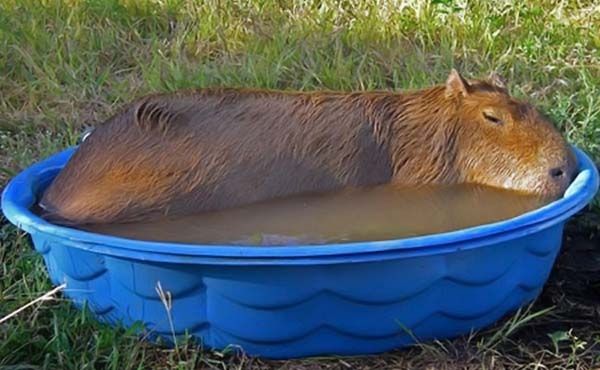|
|
Caplin Rous Capybara
|
They can have a life span of 8–10 years in the wild but average a life less than four years as they are "a favourite food of jaguar, puma, ocelot, eagle and caiman". The capybara is also the preferred prey of the anaconda. Capybara are farmed for meat and skins in South America. It is widely believed that capybara were declared by Papal Bull to be fish so they may be eaten during Lent. Because of this belief, poaching increases during the period right before Easter.
Natural history
Capybaras are very gregarious. While they do sometimes live solitarily they are more commonly found in groups that average 10-20 individuals. With 2-4 of them being adult males, 4-7 being adult females and the rest being juveniles. Capybara groups can consist of as many as 50 or 100 individuals during the dry season, when the animals gather around available water sources. Males are organized in stable, linear hierarchies. The dominant male in each group is significantly heavier than any of the subordinates, but among subordinates, status is not correlated with weight. The dominant male is positioned in the center of the group while subordinates are on the periphery. These hierarchies are established early in life among the young with play fights and mock copulations. The most dominant males have access to the best resources. Capybaras are very vocal and, when in groups, chatter with each other to establish social bonds, dominance or general group census. They can make a dog-like bark which is made when the animals are threatened or when females are herding young. The bark of a capybara is often mistaken for that of a dog.
|
|









